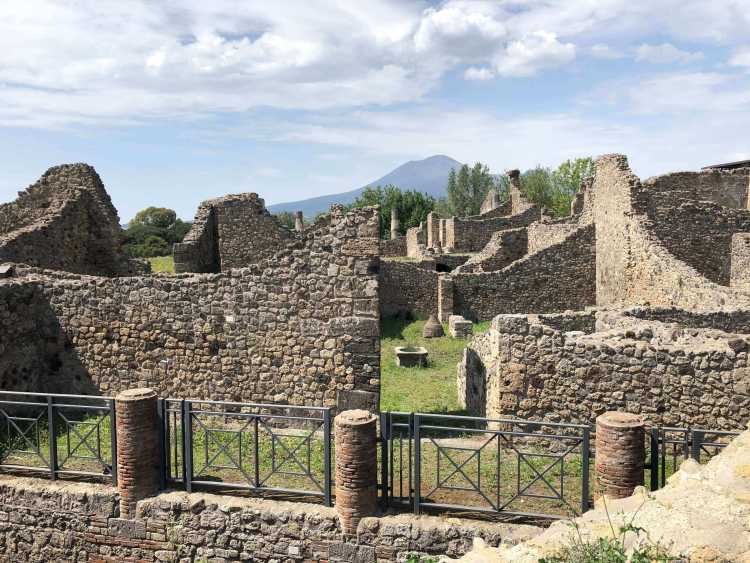
A neighborhood excavated in Pompeii, overlooked by Mt Vesuvius
It is really easy to get from Rome to Pompeii, the ancient Roman city that was buried in ash by the eruption of Mt Vesuvius in AD 79. We woke up one morning during our stay in Rome and took a quick 1 hour train ride to Naples, where we switched to the local Circumvesuviana for a half hour ride.
The train from Rome was roomy and we had our assigned seat. The train from Naples was crowded and chaotic, and may have scarred my children for life. When the train arrived, everyone jammed into the cars and we, standing in the section at the end of the car, kept getting squeezed more and more. No one seemed to notice the short children below them and they just got jammed in. Then, a few stops in, a couple of guys in typical tourist wear, bright-colored polo shirts, shorts and deck shoes, decided to jam into our super crowded car. As they started shoving into our meager space, I got mad, and started shoving the guy out of our space. I finally turned my back and holding onto the bars, created a cage with my body so no one could crowd the kids anymore. As I did that, the nice italian guy standing next to me told me to keep an eye on my purse, because the guys who jumped onto our crowded train at the recent stop were almost certainly pickpockets trying to take advantage of the crowded space to grab tourists’ wallets! Sure enough, a few stops later, the pickpockets-dressed-as-tourists jumped off the train, presumably to find a car without a crabby mom to yell at them!
We eventually reached Pompeii and met the tour guide we had hired for the day. We had signed up for a family tour, and we knew it was going to be a winner when she explained that we would be having a competition – kids vs parents, to see who could answer more of her questions correctly. Just the kind of thing to motivate our family!
I’m sure most people have heard about Pompeii, but here is a basic refresher. Pompeii was an ancient Roman holiday town with around 11,000 inhabitants, located at the foot of Mt. Vesuvius. One day in AD 79, Vesuvius erupted, quickly covering the town in 4-6 meters (13-20 feet) of volcanic ash and pumice. The ash and pumice served to preserve this 1st Century AD Roman town as it was that day. About 1,500 years later the town was discovered and excavations started in earnest around 1750. Now that a large section of the ruins have been uncovered (there is still more to do!), it offers a fascinating glimpse into history.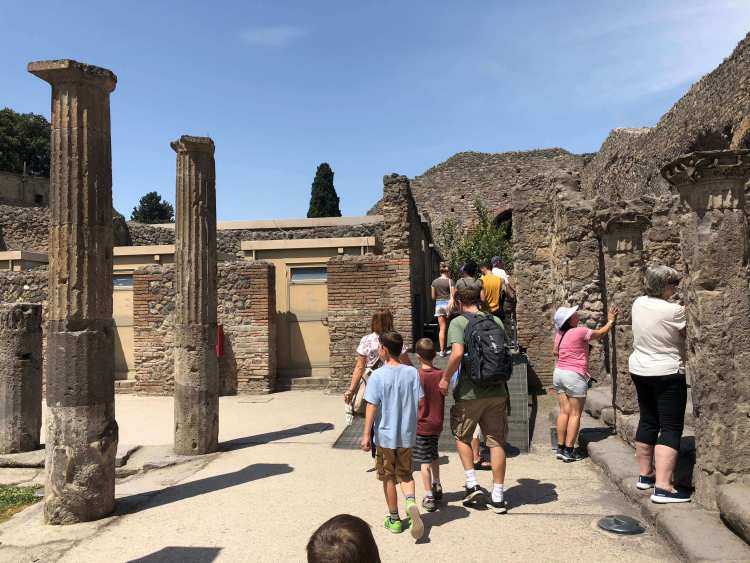 As we walked through the city, we visited amphitheaters where Pompeiians would spend hours watching a performance.
As we walked through the city, we visited amphitheaters where Pompeiians would spend hours watching a performance.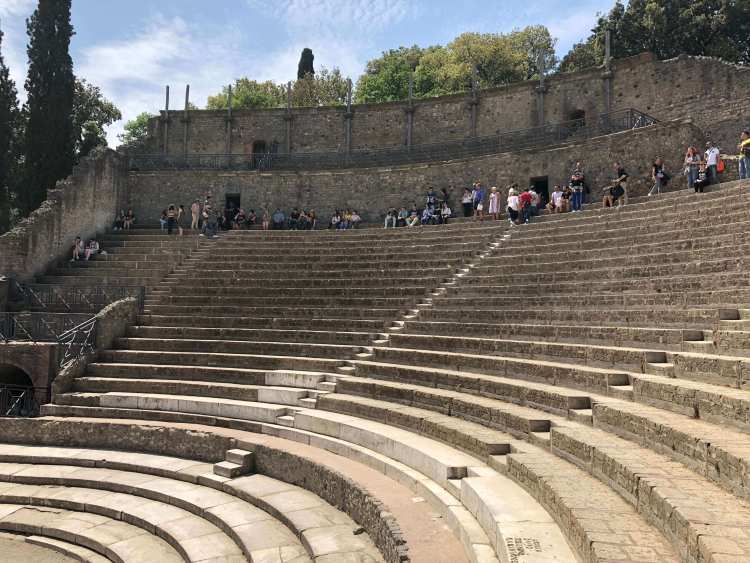 They even had seat numbers (in roman numerals of course!) – see the seat number (XII) to the left of the picture below.
They even had seat numbers (in roman numerals of course!) – see the seat number (XII) to the left of the picture below.
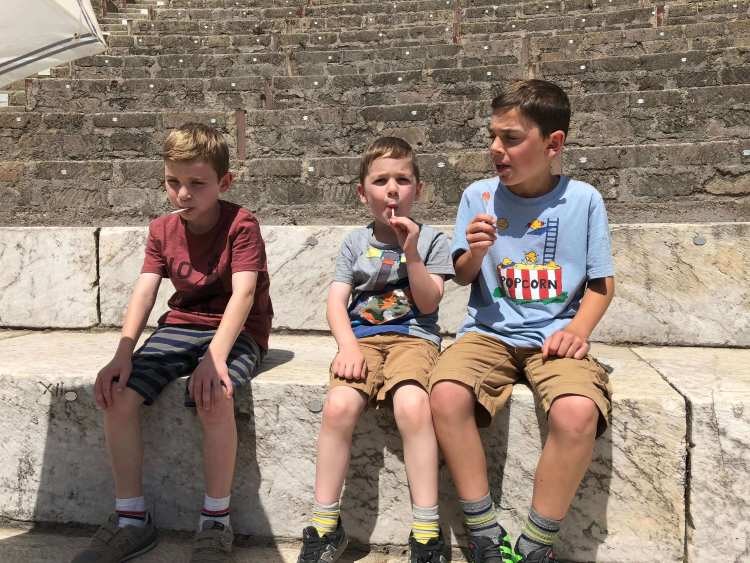
- How you know your ‘family tour’ guide knows her stuff – when she knows to supply the kids with periodic Chupa Chups (and ask parents permission before offering them to the kids)
We also got a glimpse of graffiti carved into the walls by the Roman children during said hours-long performances!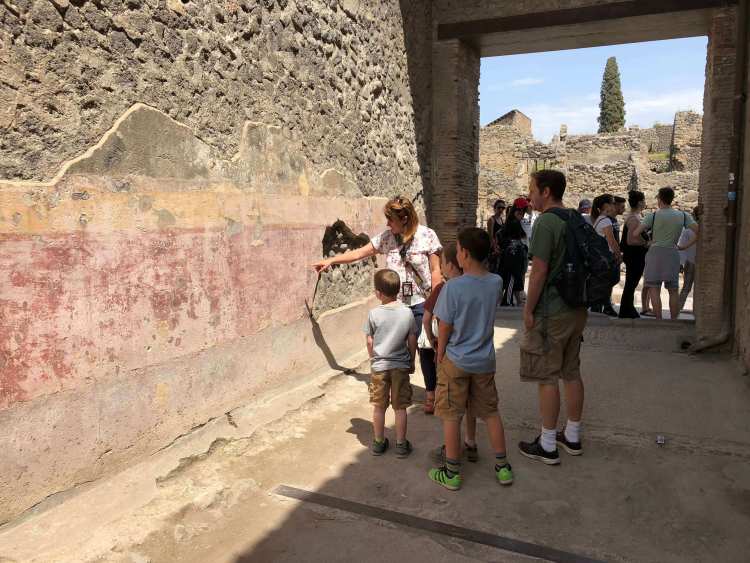
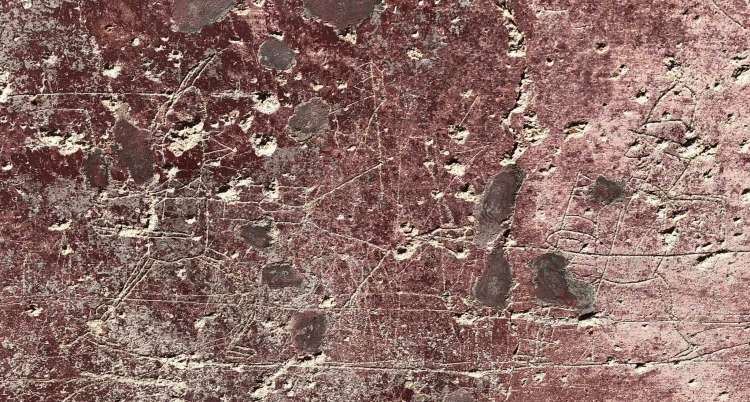
Can you see the etching of the two gladiators facing each other?
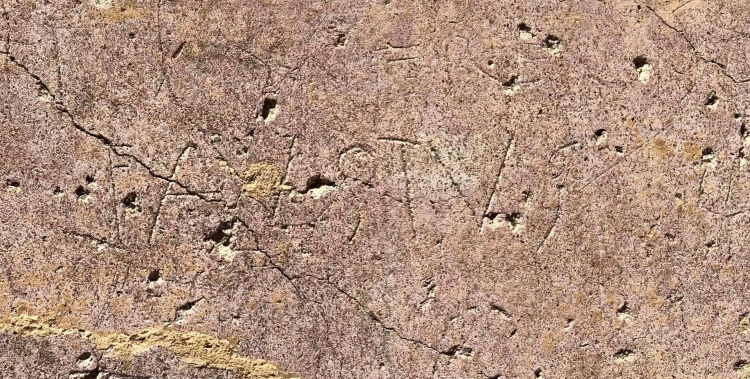
it seems Faustus was a bit of a troublemaker – our guide said you can see his name carved in the walls throughout Pompeii
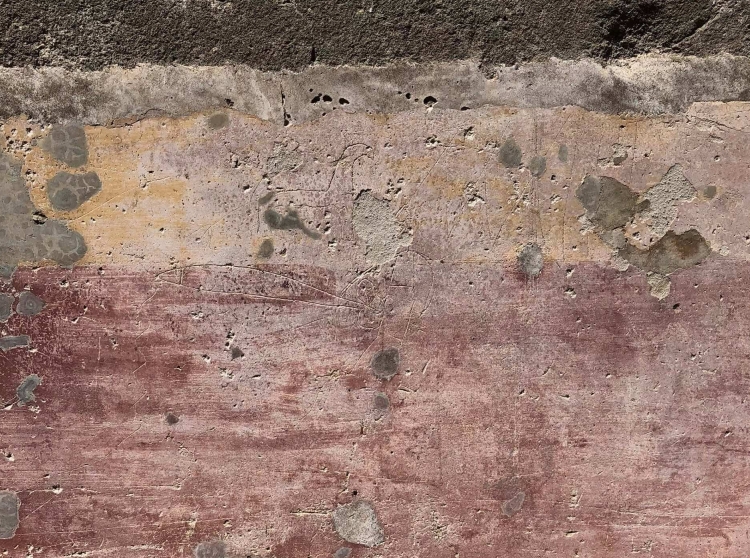
N thought this was a guy holding a fish. A said “that’s not a fish!”. If you ever needed proof that the people 2,000 years ago were the same as we are today, I present you with exhibit #1.
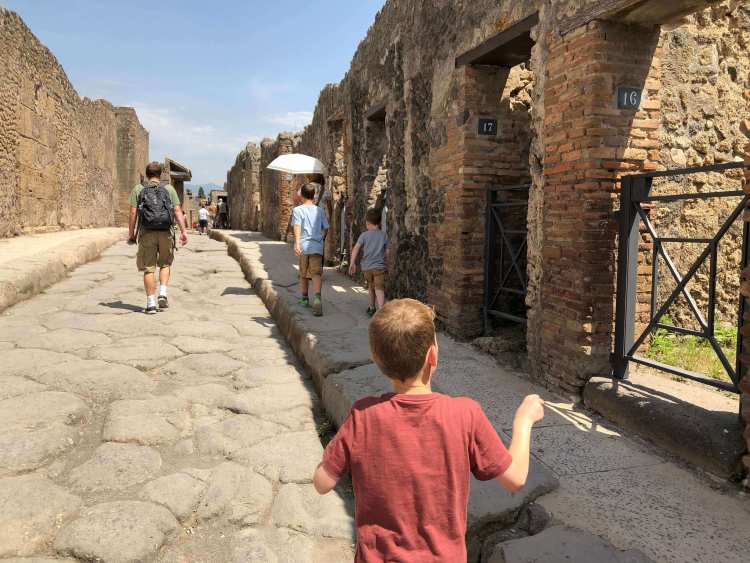
It was amazing to walk through the streets – the excavated section of the town is huge and I am sure we would’ve gotten a bit lost if we weren’t with the tour guide
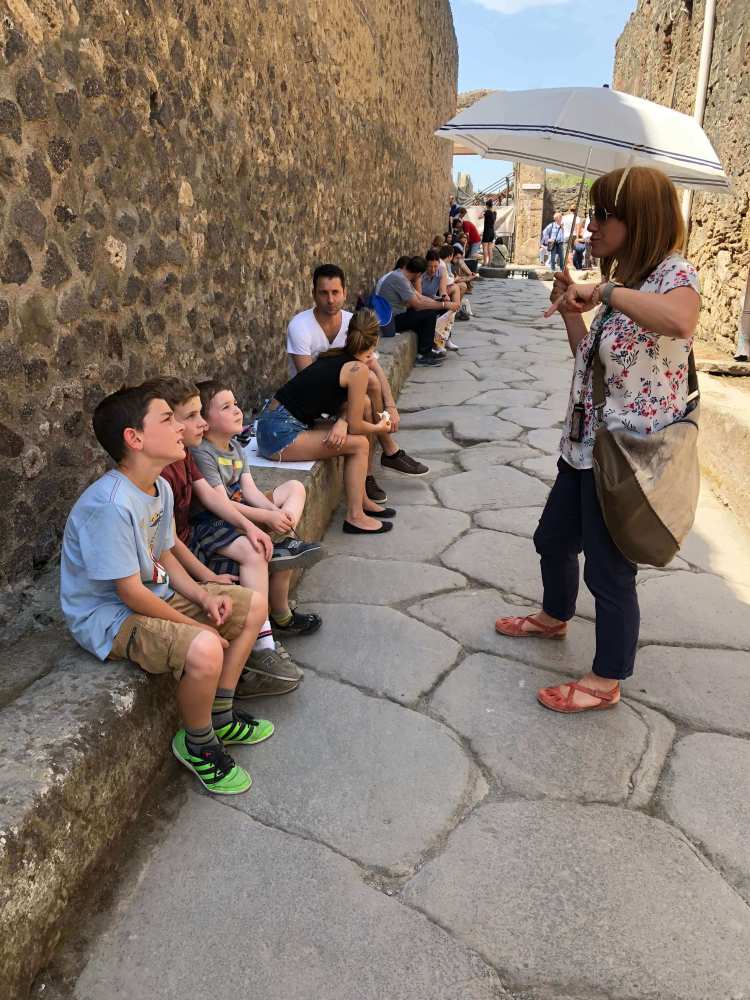
More points for the tour guide – here she is explaining the details of how the toilets would drain out into the street. The boys are clearly fascinated.
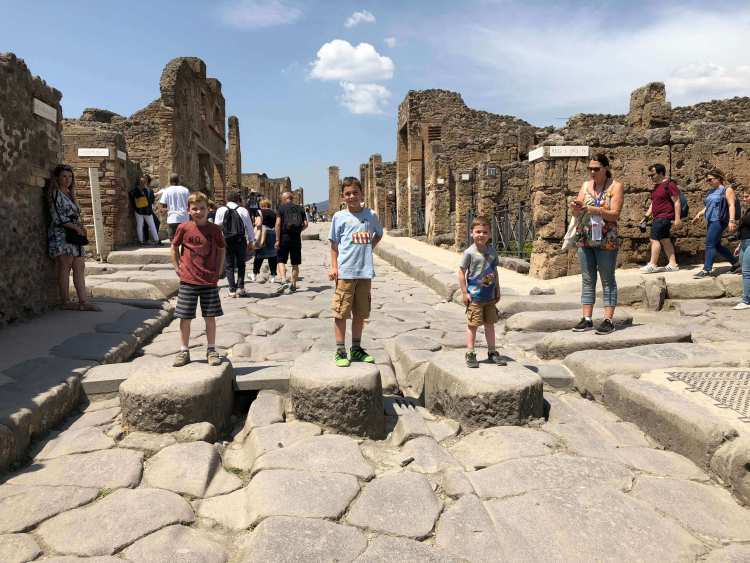
These rocks in the street were used as crosswalks. Because sewage would drain from the houses into the street, people would walk across these stones to not get their roman sandals full of muck when they needed to cross. The Roman engineers had it all figured out so the standard width of a wagon would fit in the space between the rocks.
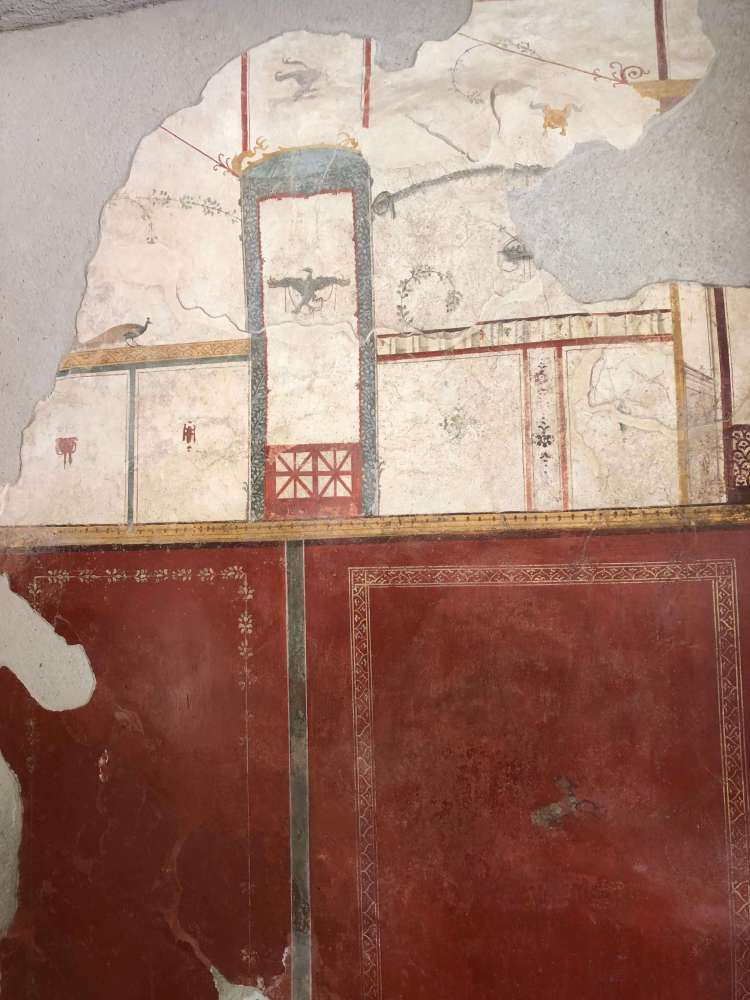
There were a few preserved and restored house interiors we were able to see. The frescoes on the wall were amazing. We could really imagine what life was like for the people living here when we walked through.
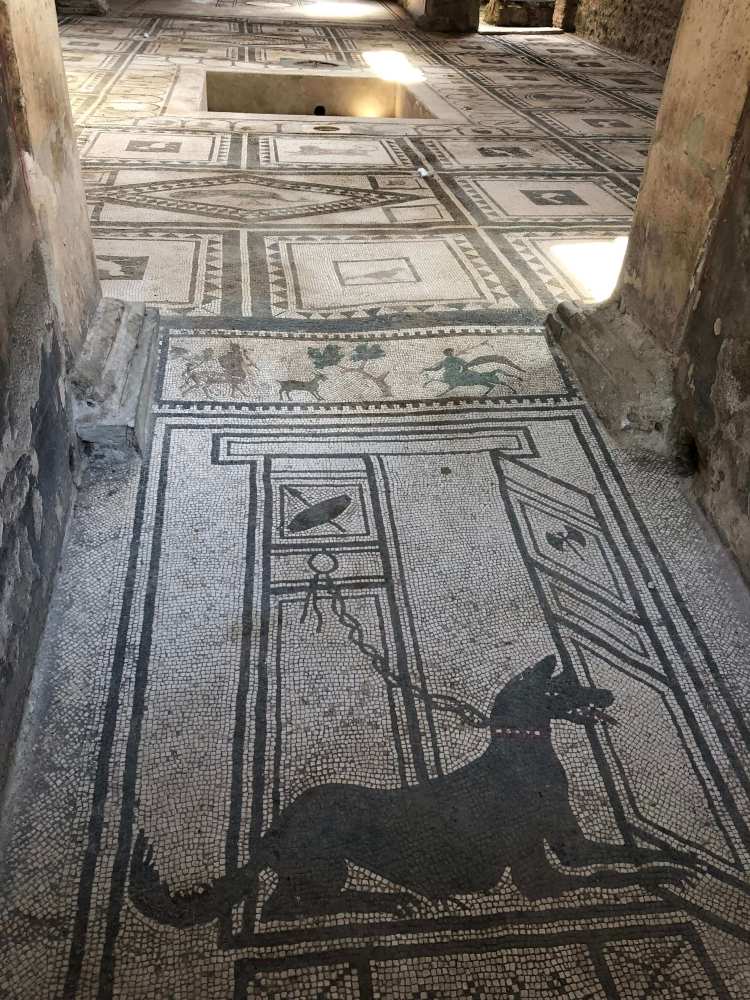
This mosaic on the floor warns visitors of the large dog in the house
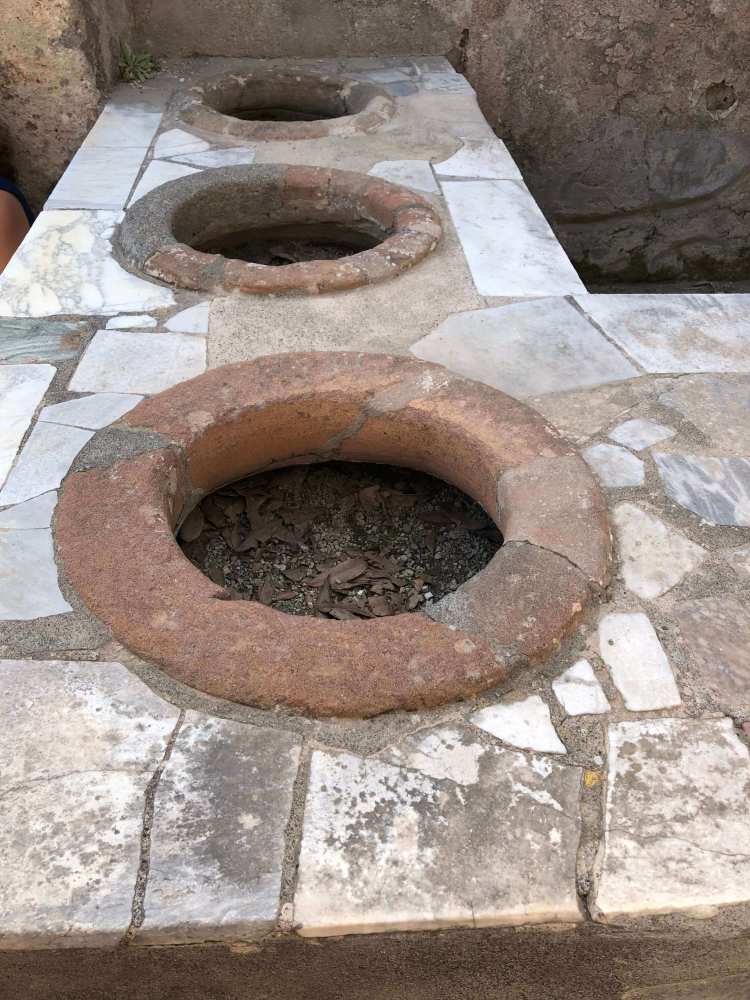
We visited Pompeii’s fast food restaurant. These holes stored big pots of food, and Pompeii citizens would stop by to pick up dinner.

This is a baker’s oven. Only the very rich of Pompeii had their own oven, so most citizens would get their bread from the baker. In one bakery, more than 85 loaves of bread were uncovered, having been left at the time of the eruption. The bread (turned into carbon) lasted in the ovens for over 1,000 years!
Of course, being Romans, they had a Roman bath in the town. We were able to walk through it and see the amazingly preserved floors, walls and ceiling.
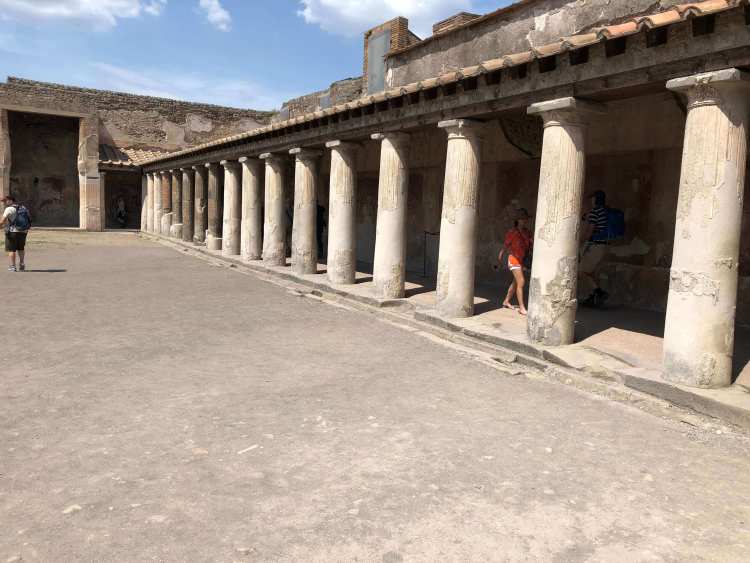
Pompeii’s public bath

This marble tile was on the floor of the public bath. It was mind-blowing to imagine that people who lived 2,000 years ago were walking on this floor. It looks like it could be in the lobby of any big city office building today!
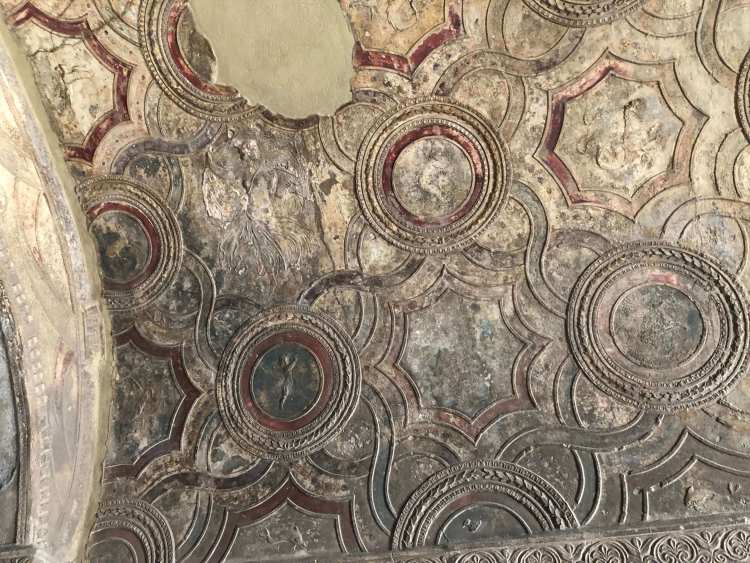
the public bath ceiling
This is “main street” Pompeii – a huge avenue with houses along both sides. Another surreal spot in Pompeii – the buildings and the road were, though clearly ruins, in good enough shape that you could really imagine what life was like here so long ago.
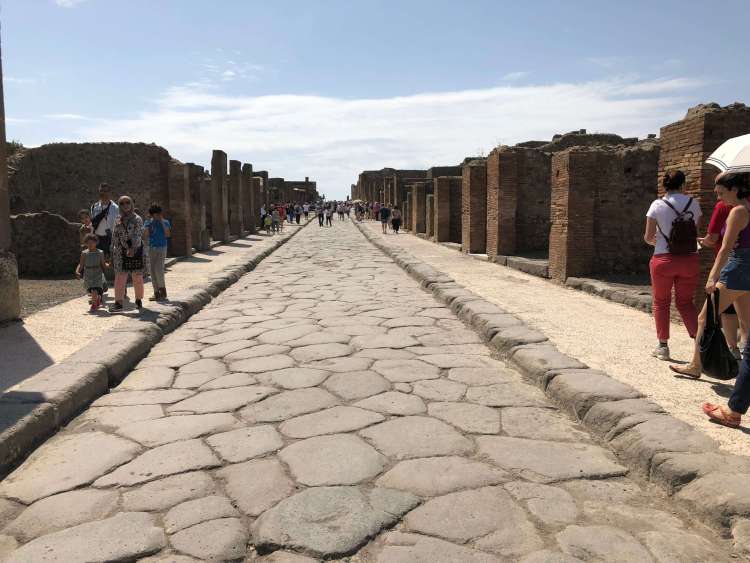
Our last stop of our tour was Pompeii’s forum. It was a huge gathering space, capable of holding the entire population of Pompeii.
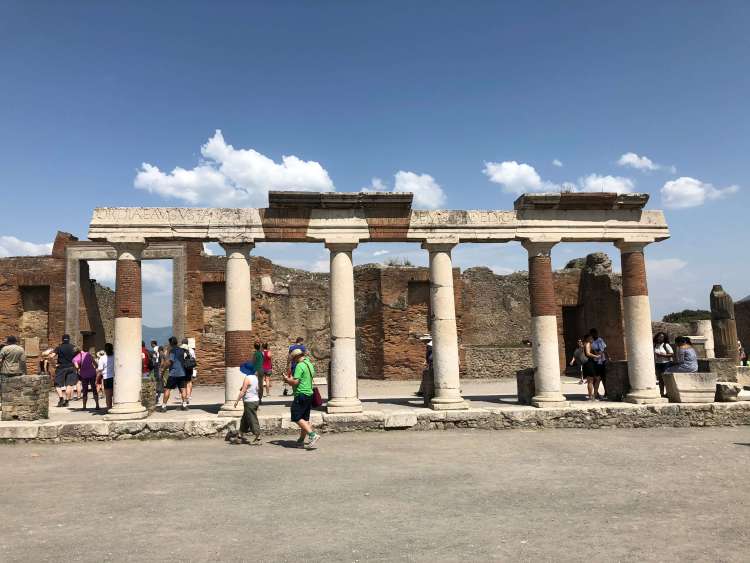
At the edge of the Forum is a warehouse where many of the artifacts found in Pompeii are stored. There is an astounding amount of every day items there.
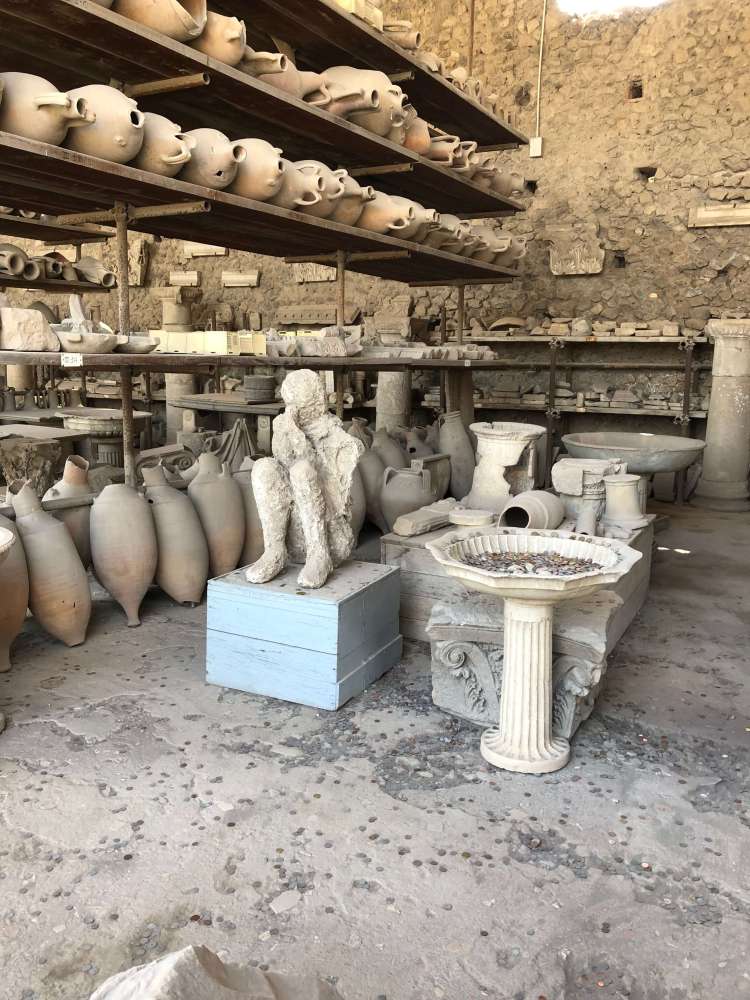
Some of the most interesting and sad artifacts were the plaster casts of the bodies found on the site. Most people trapped in Pompeii died instantly and were covered in the exact position they were in when the cloud of pumice and ash arrived. Eventually, the ash and pumice cooled, hardening in place. Meanwhile, over time the organic matter, the clothes and skin and bones, of the victims disintegrated, leaving empty cavities. When the site was excavated, they poured plaster of Paris into the cavities and were left with amazingly detailed renderings of the people (and in some case, pets!) at the exact time they died. A bit morbid, and quite sad, but fascinating all the same.
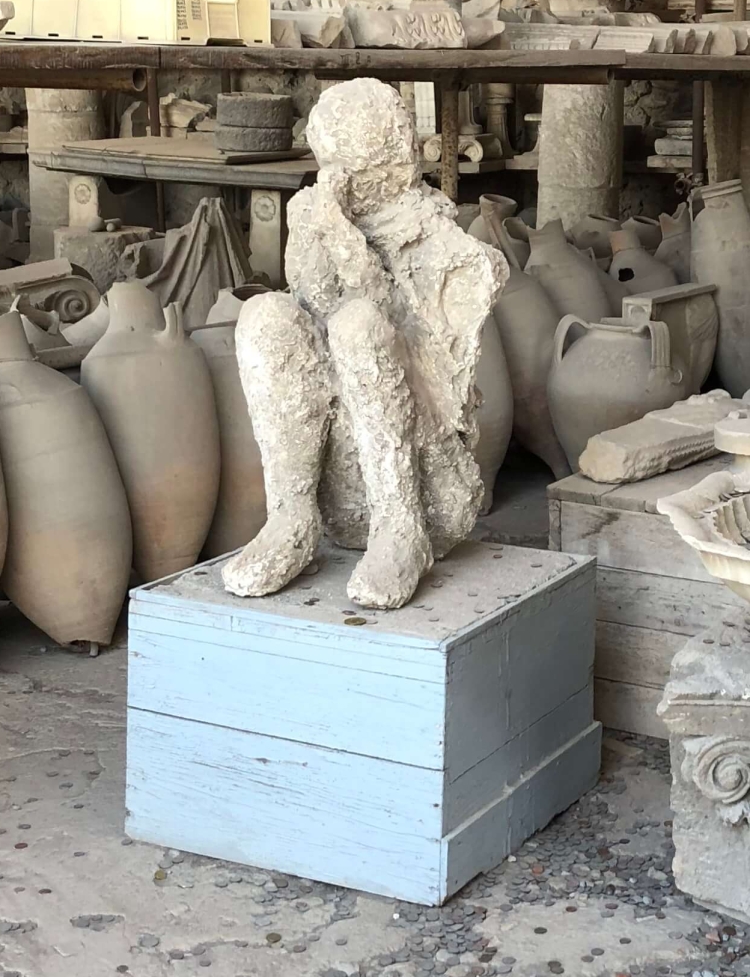
This guy died in this position, with his hands covering his nose and mouth
We had a great few hours in Pompeii, and it really is a special place. A place that really helps us to imagine what life was like almost 2,000 years ago. I think if I was alive back then, this would be a great place to live (before 79 AD, at least!!). It was totally worth the hype, and I’m glad we made the effort to visit.


